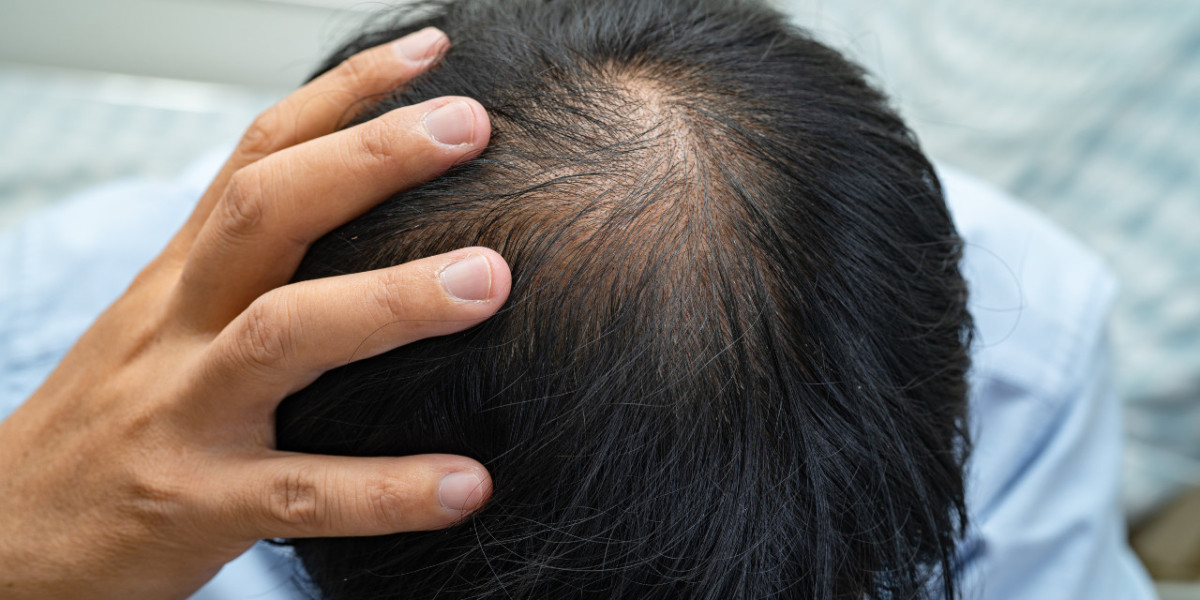As hair restoration techniques continue to evolve, the No Shave FUE method has emerged as an appealing option for many seeking to regain their hair. This innovative approach offers a minimally invasive solution without the need for shaving the donor area, making it particularly attractive for individuals who want to maintain their current hairstyle during the process. But who are the ideal candidates for this procedure, and what kind of success rates can you expect? In this article, we’ll explore the key factors that determine candidacy for No Shave FUE, along with insights into success rates based on various individual circumstances. Remember, this information serves as general guidance and should not be considered specific legal or financial advice. Let's dive in and uncover what makes this hair restoration option unique!
Understanding No Shave FUE
No Shave Follicular Unit Extraction (FUE) is an innovative hair restoration technique that allows individuals to undergo a hair transplant without the need for shaving their entire head. This method has gained popularity among those who prefer to maintain their current hairstyle during the procedure.
How No Shave FUE Works
The process involves extracting individual hair follicles from a donor area, typically located at the back or sides of the scalp. Using a specialized tool, the surgeon carefully removes these follicles without requiring extensive shaving. This precision leads to minimal visible signs of surgery, allowing candidates to return to their daily lives with little disruption.
One of the key advantages of No Shave FUE is its adaptability. Surgeons can work around existing hair, making it a suitable option for individuals with shorter hairstyles or those who are reluctant to lose their hair length during the recovery period. The technique also facilitates a faster healing process, as the extraction sites are generally less noticeable and require less aftercare than traditional methods.
Ideal Candidates
Candidates for No Shave FUE typically include those with sufficient hair density in the donor area and those seeking to maintain their hairstyle throughout the procedure. It is particularly appealing to younger individuals or professionals who may be concerned about their image during the recovery phase.
Moreover, this approach is suitable for both men and women who experience hair thinning or loss, as it provides a discreet way to achieve hair restoration. However, not everyone is a perfect fit; potential candidates should have realistic expectations and engage in thorough consultations with their surgeons.
Success Rates and Considerations
Success rates for No Shave FUE are comparable to traditional FUE techniques, with many patients experiencing significant hair regrowth within a few months. The key factors influencing success include the skill of the surgeon, the quality of the donor hair, and the patient's overall health.
As with any medical procedure, it's essential for candidates to understand the potential risks and to follow their surgeon's post-operative care instructions closely. This careful approach can enhance the likelihood of achieving desired outcomes, making No Shave FUE an appealing option for those looking to restore their hair discreetly.
Who Makes an Ideal Candidate?
No Shave FUE (Follicular Unit Extraction) is a cutting-edge hair restoration technique that appeals to many, but not everyone is suited for the procedure. Identifying the right candidates can significantly enhance the likelihood of successful outcomes.
Age and Hair Loss Pattern
While there isn’t a strict age requirement, candidates typically range from young adults to those in their 50s. Younger individuals may experience ongoing hair loss, making it essential to evaluate their specific patterns. The Norwood Scale, which classifies male pattern baldness, or corresponding scales for women can help determine the extent of hair loss and suitability for the procedure.
Hair and Scalp Health
Good overall health, particularly of the scalp, plays a crucial role. Candidates should have healthy hair follicles in the donor area, as these will be extracted and transplanted. Conditions like alopecia or severe scalp infections can disqualify someone from having the procedure. A consultation with a qualified specialist is necessary to assess the scalp condition.
Realistic Expectations
An ideal candidate possesses realistic expectations about the results. While No Shave FUE can create a natural-looking hairline and restore density, it can’t guarantee a full head of hair like one had in their youth. Understanding the limitations of the procedure is key to patient satisfaction.
Commitment to Aftercare
Post-procedure care is vital for promoting hair growth and achieving optimal results. Candidates should be prepared to follow the aftercare instructions provided by their healthcare provider. This commitment includes avoiding strenuous activities and following a prescribed hair care regimen during the healing process.
Psychological Readiness
Finally, candidates should assess their mental readiness for the procedure. Hair loss can impact self-esteem, and undergoing hair restoration should be a personal choice made for the right reasons. Those who are mentally prepared for the journey tend to experience greater satisfaction with their results.
In summary, the ideal candidate for No Shave FUE combines appropriate age, good health, realistic expectations, commitment to aftercare, and psychological readiness. This multifaceted approach ensures that individuals are set up for the best possible outcome.
Key Factors for Success
No Shave Follicular Unit Extraction (FUE) is a popular hair restoration technique, but its effectiveness can vary based on several critical factors. Understanding these elements can help potential candidates make informed decisions about their hair transplant journey.
Candidate Selection
The first step to a successful No Shave FUE procedure is ensuring the right candidate selection. Ideal candidates typically have sufficient donor hair available, which can be assessed during a consultation. Hair characteristics, such as density, texture, and color, play a vital role in the final outcome. Those with thicker hair often see more satisfying results, as it provides better coverage.
Scalp Condition
The condition of the scalp is another essential factor. A healthy scalp promotes proper healing and follicle survival. Candidates with conditions such as psoriasis or fungal infections may need to address these issues prior to undergoing the procedure. Additionally, individuals with a history of excessive scarring or poor healing should discuss these concerns with their surgeon to evaluate potential risks.
Surgeon Expertise
The skill and experience of the surgeon significantly influence the success of the transplant. A highly trained specialist in No Shave FUE techniques can achieve natural-looking results. It's advisable to review before-and-after photos and seek testimonials from previous patients. An experienced surgeon will also tailor the approach to the individual’s needs, ensuring a customized experience.
Post-Operative Care
Proper post-operative care is crucial for the success of any hair transplant. Following the surgeon's aftercare instructions can enhance healing and promote hair growth. This may include avoiding certain activities, using recommended products, and attending follow-up appointments. Patients who adhere to these guidelines often enjoy better results and minimize complications.
Realistic Expectations
Setting realistic expectations about the outcomes is vital for candidates. While No Shave FUE can provide significant improvements, results may take time to manifest fully. Understanding the timeline and what constitutes an achievable result can lead to increased satisfaction with the process.
Considering these key factors can empower candidates to make well-informed decisions and ultimately enhance the likelihood of a successful No Shave FUE experience.
Age Considerations for Candidates
When evaluating candidates for No Shave FUE (Follicular Unit Extraction), age plays a significant role. Hair loss can affect individuals of various age groups, but the underlying causes and expected outcomes can vary considerably.
Young Adults (18-30 Years)
For younger candidates, hair loss may be primarily attributed to genetic factors, such as androgenetic alopecia. While some young adults seek hair restoration to boost self-esteem, their hair loss pattern might not be fully established. Proceeding with treatment at this stage can be a double-edged sword. If the candidate continues to experience hair loss, the initial transplant may not blend well with future hair loss patterns. Therefore, it’s crucial for younger candidates to have realistic expectations and a thorough consultation to assess their long-term hair loss progression.
Adults (30-50 Years)
Individuals in their thirties and forties often represent the most common demographic for No Shave FUE procedures. By this age, hair loss patterns tend to be more predictable, allowing for better planning of the transplant. Many candidates in this age group are also dealing with stress, lifestyle changes, and other factors that can exacerbate hair thinning. This demographic typically has an adequate donor supply, which can contribute to a successful outcome. Additionally, they are often more committed to maintaining their results through proper aftercare.
Older Adults (50 Years and Above)
Candidates over fifty may have different considerations when it comes to No Shave FUE. Hair loss in this age group can be more extensive, and the scalp's elasticity may decrease, which can affect the procedure’s success. However, older adults can also benefit from hair restoration if they have realistic expectations about the density and fullness achievable. Health assessments are essential, as underlying medical conditions may impact surgery and recovery.
In every age group, the consultation process is vital. Assessing the candidate's overall health, hair loss pattern, and expectations helps in tailoring the treatment plan. Understanding that hair restoration is not a one-size-fits-all solution allows candidates of any age to make informed decisions about their hair restoration journey.
Hair Type and Density Requirements
No Shave Follicular Unit Extraction (FUE) offers a minimally invasive option for hair restoration, but its success is closely tied to specific hair types and densities. Understanding these factors is crucial for individuals considering this procedure.
Hair Type Considerations
The texture and curl pattern of hair can significantly influence the outcome of a No Shave FUE. Generally, thicker and coarser hair tends to provide better results, as it covers the scalp more effectively and creates a fuller appearance. Conversely, fine or straight hair may require more grafts to achieve the desired density, making the procedure potentially less effective for some patients. Curly hair, with its natural volume, can also mask thinning areas, enhancing the visual impact of hair restoration.
Hair Density and Donor Area
A key aspect of No Shave FUE is the availability of donor hair, especially in the occipital area (the back of the head). Patients with a higher density of hair in this region are often better candidates, as they can provide enough grafts for a successful transplant. Ideally, a donor density of 60-80 follicular units per square centimeter is considered optimal. Those with lower density may find that they require more extensive harvesting, which can lead to a less favorable outcome.
Evaluating Hair Loss Patterns
Another important factor is the pattern of hair loss. Candidates with Norwood Scale types I to III typically see better results, as they still have sufficient coverage in donor areas and are less likely to experience significant future hair loss. Those with advanced stages of baldness may not achieve the desired aesthetic results, making it essential to consult with a qualified professional to assess individual conditions and expectations.
In summary, a thorough evaluation of hair type, density, and loss pattern is essential for determining candidacy for No Shave FUE. Discussing these factors with a specialist can help set realistic goals and expectations, enhancing the likelihood of a successful hair restoration journey.
Medical History and Scalp Conditions
When considering No Shave FUE (Follicular Unit Extraction) hair transplant, understanding your medical history and current scalp conditions is crucial for determining candidacy and potential success. Several factors come into play, making it essential to have an open discussion with your healthcare provider.
Pre-existing Conditions
Individuals with certain medical conditions may face challenges when undergoing No Shave FUE. Conditions such as alopecia areata, autoimmune disorders, or severe skin diseases can affect hair growth and the healing process. It’s important to disclose any history of such conditions to your surgeon, as they may influence the outcomes of the procedure.
Medications and Treatments
Another critical aspect is the medications currently being taken. Blood thinners, corticosteroids, and some acne medications can complicate the surgery and recovery. A thorough review of your medication list will help your surgeon devise a suitable plan and take necessary precautions.
Scalp Health
The condition of your scalp plays a significant role in the success of No Shave FUE. A healthy, well-nourished scalp with no signs of infection or irritation is ideal. Conditions like psoriasis or dermatitis can hinder the healing process and may require treatment prior to the procedure. Scalp assessments are vital, ensuring that the skin is in optimal condition for surgery.
Age and Hair Loss Pattern
Age is another consideration. While No Shave FUE can be performed on individuals in their 20s, the pattern and extent of hair loss should be evaluated. Younger candidates may not yet have stabilized hair loss, making it harder to predict future growth patterns. Understanding your hair loss progression can help in making informed decisions regarding the timing of the procedure.
In essence, a comprehensive evaluation of your medical history and scalp condition will provide a clearer picture of your suitability for No Shave FUE. This initial step is not just about assessing risks; it also lays the foundation for a successful hair restoration journey.
Evaluating Hair Loss Patterns
Understanding hair loss patterns is crucial for determining the suitability of No Shave Follicular Unit Extraction (FUE) for an individual. Hair loss can manifest in various forms, and recognizing these patterns can guide effective treatment decisions.
Common Hair Loss Patterns
Androgenetic alopecia, often referred to as male or female pattern baldness, is the most prevalent form of hair loss. In men, this typically begins with a receding hairline and thinning at the crown. Women, on the other hand, tend to experience overall thinning, particularly at the part line, while maintaining their frontal hairline. Identifying these patterns is essential as they influence the approach taken during a No Shave FUE procedure.
Assessing the Norwood and Ludwig Scales
The Norwood Scale for men and the Ludwig Scale for women are standard tools used to classify the stages of hair loss. The Norwood Scale ranges from Type I (minimal loss) to Type VII (severe loss), helping clinicians understand the extent and location of hair thinning. For women, the Ludwig Scale has three types, indicating varying degrees of diffuse hair thinning. Prospective patients should discuss their specific stage with a qualified specialist to evaluate the best treatment options.
Impact of Hair Density and Quality
Another factor to consider is the density and quality of existing hair. Candidates with a higher density of donor hair are often better suited for No Shave FUE, as this technique relies on harvesting healthy follicles. Additionally, the texture and growth cycle of the hair can affect the final aesthetic results. A thorough consultation can help determine if an individual's hair characteristics will lead to a successful outcome.
Age and Timing Considerations
Age plays a role in hair loss patterns and can influence the timing of a No Shave FUE procedure. Younger patients may experience more progressive hair loss, which could lead to the need for future procedures. It is vital to approach hair restoration with a long-term perspective, weighing the potential for further thinning against current hair loss patterns.
A comprehensive evaluation of these factors ensures that candidates for No Shave FUE receive personalized recommendations that enhance their chances of successful hair restoration.
Psychological Readiness for Hair Restoration
Deciding to undergo a hair restoration procedure, such as No Shave FUE, involves more than just physical preparation. Psychological readiness plays a crucial role in determining the overall success of the treatment. Candidates who approach the process with a positive mindset and realistic expectations are more likely to experience satisfaction with their results.
Understanding Expectations
It's essential for potential candidates to have a clear understanding of what hair restoration can and cannot achieve. While advancements in technology have improved outcomes, no procedure can create a full head of hair for everyone. Patients should engage in open discussions with their healthcare providers to ensure they grasp the realistic timelines, potential limitations, and expected results of the procedure.
Coping with Hair Loss
Hair loss can significantly impact an individual’s self-esteem and emotional well-being. Those contemplating hair restoration should assess how they cope with the psychological effects of hair thinning or baldness. Seeking support from friends, family, or even professional counseling can help individuals address underlying issues related to body image and self-worth.
Mental Preparedness for Recovery
The recovery period following No Shave FUE requires patience and commitment. Candidates must be mentally prepared to follow post-operative care instructions and manage any discomfort or temporary changes in appearance. Understanding that visible results take time can aid in maintaining a positive attitude throughout the healing process.
Self-Reflection and Motivation
Self-reflection is an important step before committing to any procedure. Candidates should consider their motivations for seeking hair restoration. Are they looking to regain confidence, or is it driven by external pressures? Genuine, personal reasons often lead to better satisfaction with the results.
In conclusion, the psychological aspects of hair restoration are just as significant as the physical ones. By ensuring they are mentally prepared, candidates can not only improve their chances of successful outcomes but also enhance their overall experience during the transformation journey.
Success Rates Explained
No Shave FUE (Follicular Unit Extraction) is gaining traction as a minimally invasive hair restoration option. Understanding the success rates of this procedure helps potential candidates make informed choices and sets realistic expectations.
Defining Success in No Shave FUE
Success in No Shave FUE can be measured through various factors, including hair growth density, patient satisfaction, and the natural appearance of the transplant. Many clinics report that over 90% of patients experience noticeable hair growth within six to twelve months. This statistic is encouraging, yet it’s essential to consider individual variability.
Key Factors Influencing Success Rates
Several factors contribute to the success of No Shave FUE. The skill and experience of the surgeon play a crucial role. Surgeons who specialize in this technique typically have higher success rates due to their familiarity with the intricacies involved. Additionally, the quality of the donor hair is significant. Healthier hair follicles tend to yield better growth results.
Another aspect to consider is the patient’s overall health and genetics. Individuals with a strong family history of hair retention may experience better outcomes. Compliance with post-operative care instructions also affects healing and hair growth. Patients who follow their surgeon’s recommendations tend to see improved results.
Comparative Success Rates
When comparing No Shave FUE to traditional FUE, many patients find the success rates to be comparable. However, No Shave FUE offers added benefits, such as minimal scarring and a quicker recovery time. This technique allows individuals to return to their daily activities sooner while maintaining a discreet appearance during the healing process.
Real Patient Experiences
Feedback from patients provides valuable insights into the success of No Shave FUE. Many report satisfaction with their results, citing increased confidence and a more youthful appearance. While results can vary, the majority of patients express a positive experience, contributing to the growing popularity of this procedure.
In conclusion, the success rates of No Shave FUE are promising, influenced by various factors, including technique, surgeon skill, and individual characteristics. As more people seek effective hair restoration solutions, understanding these elements can empower candidates to make the best choice for their needs.
Post-Procedure Care and Expectations
After undergoing a No Shave Follicular Unit Extraction (FUE) hair transplant, proper care is essential for optimal results. Patients should be well-informed about the post-procedure landscape to ensure a smooth recovery and the best possible outcome.
Immediate Aftercare
In the hours following the procedure, patients may experience some swelling and minor discomfort. It’s advisable to rest and avoid any strenuous activities that could exacerbate these symptoms. Keeping the head elevated during sleep can help reduce swelling.
Cleaning and Shampooing
Within a few days, patients can begin washing their hair gently. It’s important to use a mild, non-irritating shampoo to avoid damaging the newly transplanted follicles. Avoid scrubbing the scalp; instead, let water run over it to clean the area without direct pressure. Most clinics provide specific washing instructions, which should be followed closely.
Medications and Follow-ups
Doctors often prescribe medications to manage pain and reduce the risk of infection. Adhering to this regimen is crucial. Patients should also schedule follow-up appointments as directed to monitor the healing process and address any potential concerns.
What to Expect in the Weeks Ahead
During the first week, patients may notice scabbing on the scalp, which is a normal part of healing. These scabs will gradually fall away, revealing new hair growth. In the first few months, shedding of the transplanted hair can occur, which may be surprising but is part of the hair growth cycle. Patience is key, as new hair will start to emerge in about three to six months.
Long-Term Care
Once the hair begins to grow, maintaining a healthy scalp and hair care routine becomes vital. Regular washing and gentle handling of the hair will support its development. Additionally, consulting with a dermatologist or hair specialist about ongoing hair loss treatments can further enhance results.
The recovery journey after a No Shave FUE procedure can be transformative with the right care. Understanding what to expect and following the recommended guidelines will significantly contribute to achieving the desired outcomes.
Common Misconceptions About No Shave FUE
No Shave Follicular Unit Extraction (FUE) is gaining traction as a popular option for hair restoration, yet several misconceptions can cloud understanding of the procedure. Clarifying these myths is essential for anyone considering this method.
Myth 1: No Shave FUE Is Less Effective Than Traditional FUE
One prevalent myth is that No Shave FUE yields inferior results compared to conventional FUE. In reality, the success of the procedure largely hinges on the surgeon's skill and technique, rather than the shaving requirement. No Shave FUE utilizes the same principles as traditional FUE, allowing for natural-looking hair restoration without the need for shaving the donor area.
Myth 2: It Takes Longer to Recover
Many people believe that opting for No Shave FUE leads to a longer recovery period. This is not necessarily true. The recovery time is generally comparable to traditional methods. Patients can often return to their daily activities within a few days, depending on individual health factors and adherence to post-operative care guidelines.
Myth 3: The Procedure Is More Painful
Another common misconception is that No Shave FUE is more painful. The experience during the procedure can vary, but most patients report minimal discomfort thanks to local anesthesia. Surgeons ensure that the patient's comfort is a priority, regardless of whether the hair is shaved.
Myth 4: Results Take Longer to Appear
Some individuals think that hair growth from No Shave FUE takes longer to become visible. While the growth timeline can vary from person to person, the initial results typically emerge within a few months, much like traditional FUE. The full results may take up to a year to fully materialize, but this is standard for any hair restoration procedure.
By dispelling these misconceptions, potential candidates can make more informed decisions about whether No Shave FUE is right for them. Educating oneself about the process and understanding what to expect can significantly enhance the overall experience.
Comparing No Shave FUE to Traditional Methods
No Shave Follicular Unit Extraction (FUE) has emerged as a compelling alternative to traditional hair transplant methods. Unlike conventional FUE, which requires shaving the donor area, No Shave FUE allows patients to keep their hair intact during the procedure. This technique addresses several concerns associated with hair transplants, particularly regarding the visibility of the procedure and the associated downtime.
Visibility and Aesthetics
One of the primary advantages of No Shave FUE is the minimal visibility of the donor site post-procedure. Patients who undergo traditional FUE often feel self-conscious about the shaved areas on their scalp, which can take time to blend back with their existing hair. In contrast, No Shave FUE maintains the hair length around the extraction sites, allowing for a more discreet healing process. This is especially appealing for individuals who prefer to avoid drawing attention to their hair restoration efforts during recovery.
Recovery Time
Recovery can be quicker with No Shave FUE, as the intact hair around the extraction sites aids in camouflage. While traditional methods may show distinct marks or patches on the scalp, those undergoing No Shave FUE can often return to their daily routines sooner without noticeable signs of a procedure. The healing process can vary by individual, but many report a smoother experience with less psychological stress associated with visible changes in their appearance.
Suitability and Candidate Considerations
While No Shave FUE is suitable for many, not everyone may qualify. The technique is particularly beneficial for individuals with thicker hair types or those with a dense hairline, as these characteristics can conceal the extraction sites more effectively. However, candidates with finer hair may find traditional methods more applicable, as their hair may not provide adequate coverage. Therefore, a thorough consultation with a qualified specialist is essential to determine the best approach based on hair type, density, and personal preferences.
In terms of success rates, both No Shave FUE and traditional FUE yield comparable outcomes. The effectiveness of hair growth largely depends on the skill of the surgeon and the quality of the donor hair rather than the technique alone. Patients considering either option should focus on the expertise of their provider to ensure optimal results.
Cost Factors and Financing Options
The cost of No Shave FUE (Follicular Unit Extraction) hair restoration can vary significantly based on several factors. Understanding these elements can help potential candidates make informed financial decisions.
Factors Influencing Cost
One of the primary factors affecting the price is the extent of hair loss. Candidates with larger areas to treat typically face higher costs due to the increased number of grafts required. Similarly, the complexity of the procedure can impact pricing. If a candidate has previously undergone hair restoration treatments or has unique hair characteristics, the procedure may require additional time and expertise, leading to higher fees.
The experience and reputation of the clinic also play a crucial role. Established clinics with a track record of successful outcomes may charge more than newer or less experienced practices. It's essential to evaluate not just the cost but also the quality and credibility of the provider.
Financing Options
Many clinics offer financing plans to help candidates manage the costs of No Shave FUE. These plans can include monthly payment options, allowing individuals to spread the financial burden over time. Interest rates and payment terms vary by provider, so it’s wise to compare offers before committing.
In addition to in-house financing, third-party medical financing companies may provide loans specifically for cosmetic procedures. These loans often come with flexible repayment options, making it easier for candidates to afford treatment without significant upfront costs.
Insurance Considerations
Hair restoration treatments are typically considered cosmetic and are not covered by health insurance. However, checking with your insurance provider is always a good idea, as some plans may offer partial coverage under specific circumstances. Understanding your insurance policy can help clarify any potential financial responsibilities.
In summary, while No Shave FUE can be a significant investment, various factors influence its cost, and multiple financing options are available to assist candidates. Taking the time to research and explore these choices can lead to a more manageable financial experience.
Patient Testimonials
Hearing from individuals who have experienced No Shave FUE can provide valuable insight into its effectiveness and suitability. Here are some firsthand accounts from patients who underwent the procedure.
Transformative Experience
Mark, a 32-year-old marketing consultant, had been struggling with thinning hair for years. “I was hesitant at first, but No Shave FUE changed everything for me. The procedure was quick, and I was back to my routine within days. Seeing my hair fill in over the months was incredibly rewarding,” he shared. His experience highlights the minimal downtime associated with this technique, allowing him to return to work without anyone noticing the change.
Boosted Confidence
Jessica, a 28-year-old teacher, expressed how the procedure positively impacted her self-esteem. “I was tired of feeling self-conscious about my hair loss. After my No Shave FUE procedure, I felt like I got a part of myself back. The results look so natural that friends complimented my hair without knowing I had anything done,” she recounted. Her story emphasizes how subtle yet effective the results can be, helping individuals regain their confidence.
Realistic Expectations
Tom, a 45-year-old engineer, approached the procedure with a practical mindset. “I understood that results wouldn’t be immediate. I was pleasantly surprised to see gradual improvement. It took about six months, but watching my hair grow back was like watching a miracle unfold. It’s crucial for anyone considering this to have realistic expectations,” he advised. His experience serves as a reminder that patience plays an essential role in the journey of hair restoration.
Positive Support
Many patients noted the importance of having a supportive environment throughout their experience. Sarah, a 30-year-old nurse, mentioned, “My family and friends were incredibly supportive. They encouraged me through the process, and that made a real difference. It’s not just about the hair; it’s about the whole experience.” Having a strong support system can enhance the overall journey, making it smoother and more reassuring.
These testimonials illustrate the diverse experiences of No Shave FUE patients. Each story reflects personal journeys filled with hope, transformation, and renewed self-confidence. Hearing these accounts can help prospective patients feel more informed about what to expect.
What to Expect During the Consultation
Your consultation for No Shave FUE (Follicular Unit Extraction) is a crucial step in the hair restoration process. It sets the stage for a successful outcome and helps you determine if this procedure aligns with your goals. Here’s a breakdown of what you can expect during this important meeting.
Initial Assessment
Discussion of Goals
During the consultation, you’ll have the opportunity to express your expectations and desired outcomes. Open communication is vital. Be prepared to discuss what you envision for your hair, including factors like hairline design, density, and overall aesthetics. This dialogue helps the physician tailor a plan that aligns with your preferences.
Procedure Overview
The specialist will explain the No Shave FUE technique, outlining how it differs from traditional methods. You’ll learn about the advantages, such as minimal scarring and no need for shaving, which allows for a discreet recovery. The doctor will also cover the step-by-step process of the procedure, including the extraction of follicles and their transplantation.
Realistic Expectations
Financial Considerations
Finally, the consultation may involve photos for documentation, which aids in planning and tracking progress. This is also a chance for you to ask any lingering questions, ensuring you leave feeling confident about your next steps.
Final Thoughts
As we wrap up this journey, remember that the path to growth and success is paved with continuous learning and action. Embrace every opportunity to expand your knowledge and skills. Whether it’s mastering a new technique or diving deeper into a subject, each step forward counts.
Take what you've learned here and apply it in your daily life. Challenge yourself to explore new ideas, engage with your community, and share your insights. Growth doesn’t happen overnight, but with persistence and curiosity, you can achieve remarkable things. So, take the next step today. Your future self will thank you.








